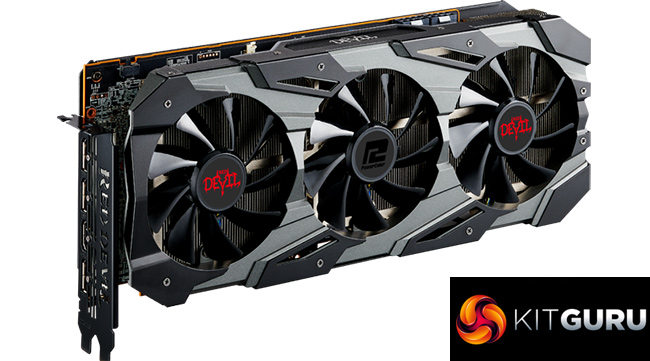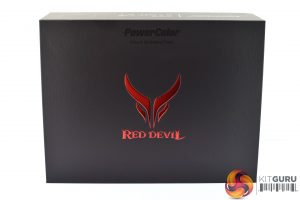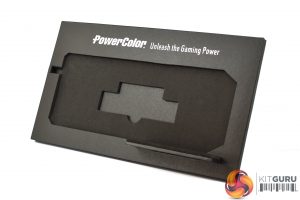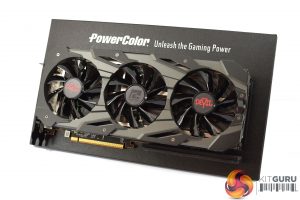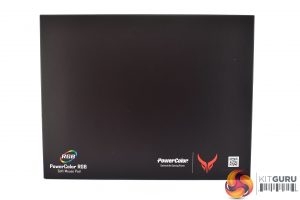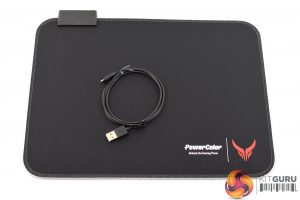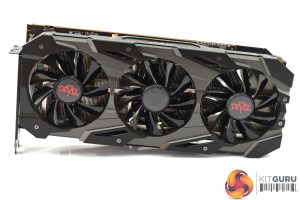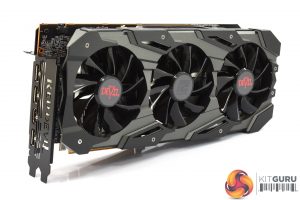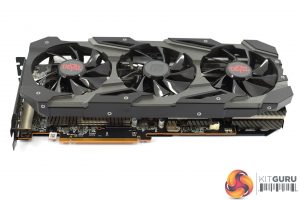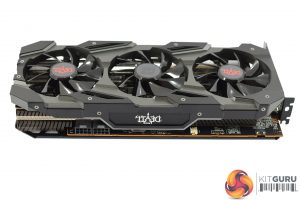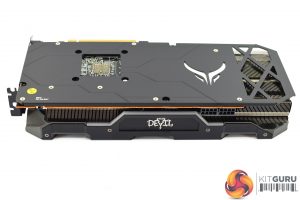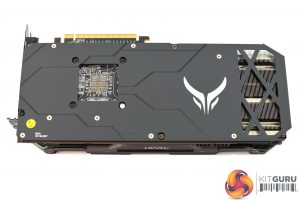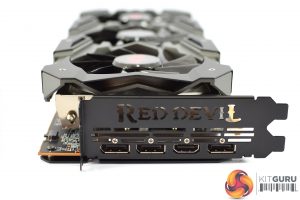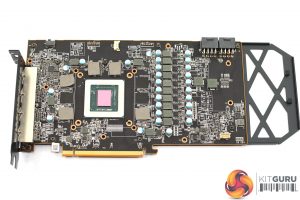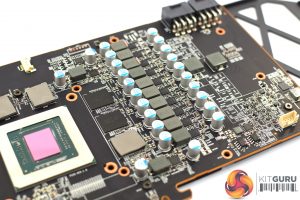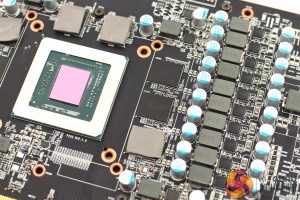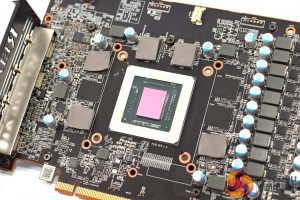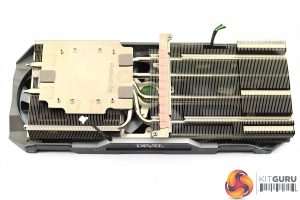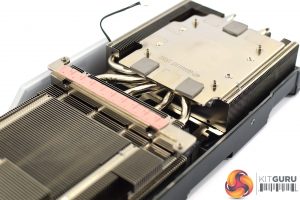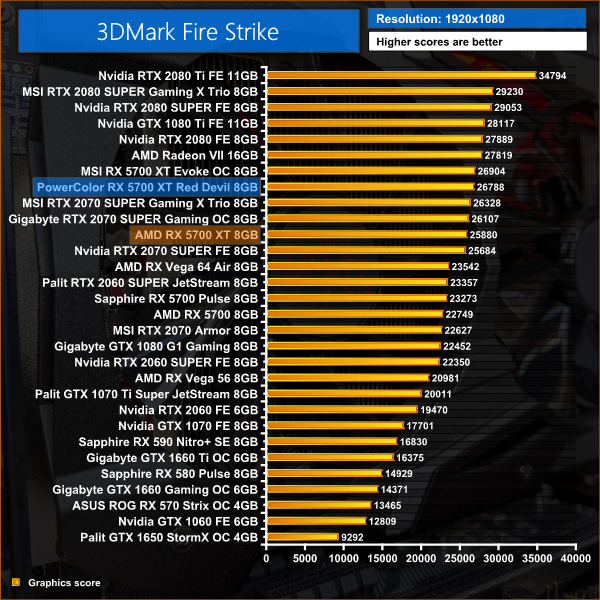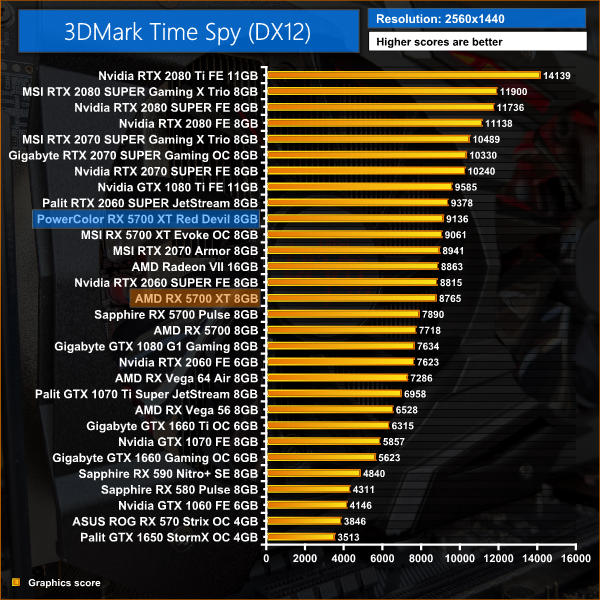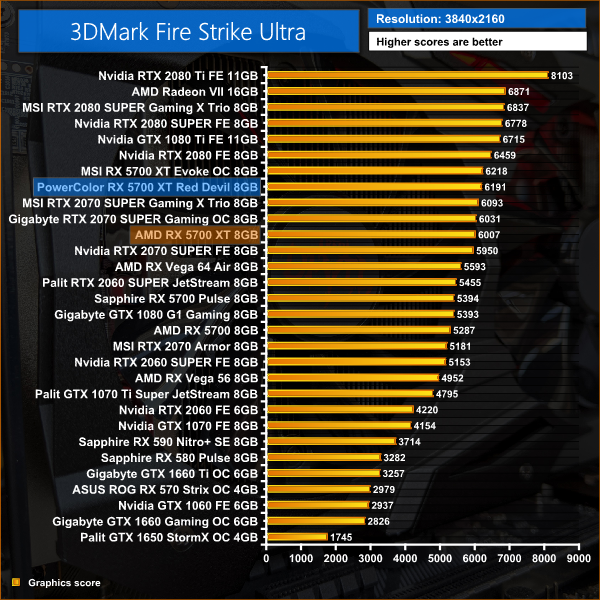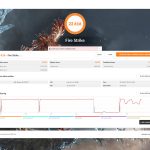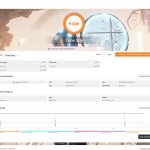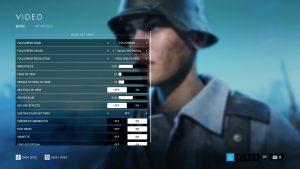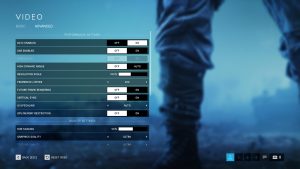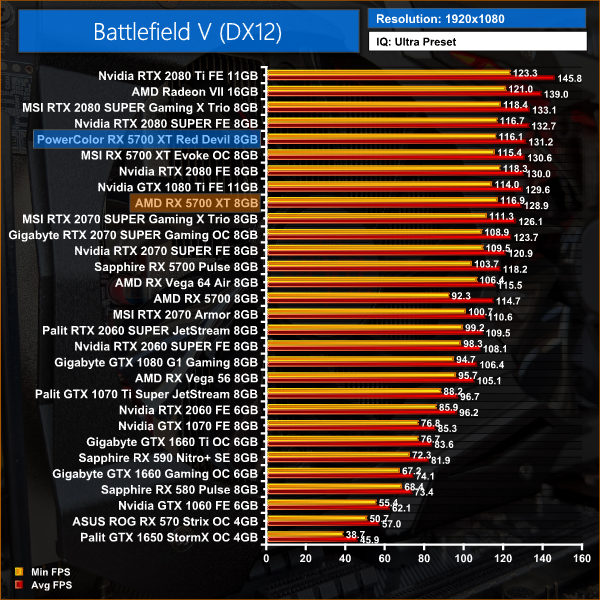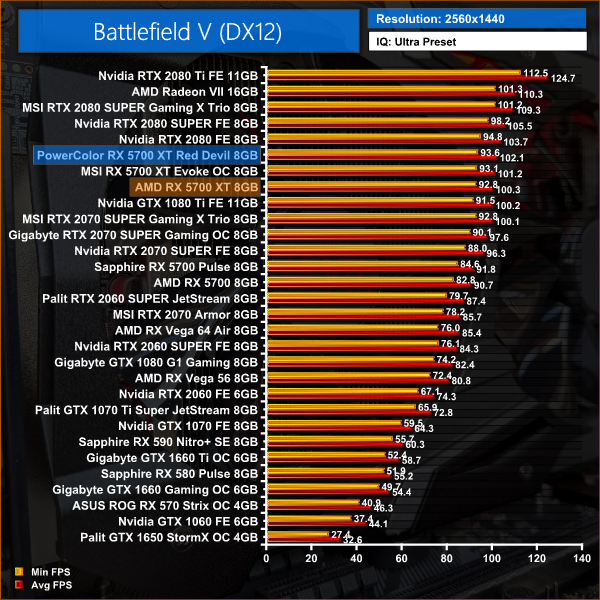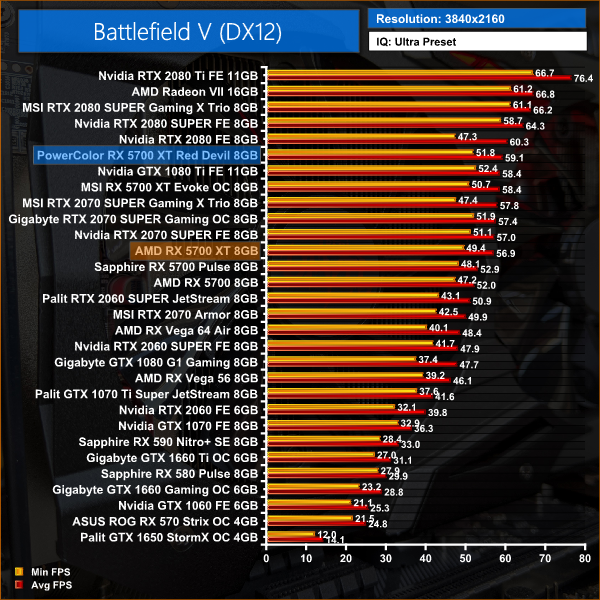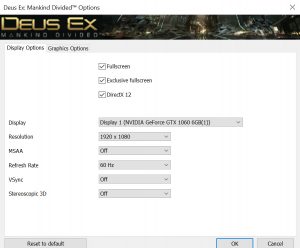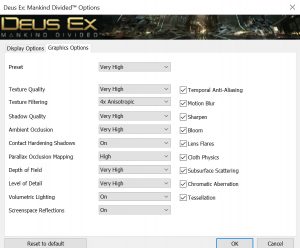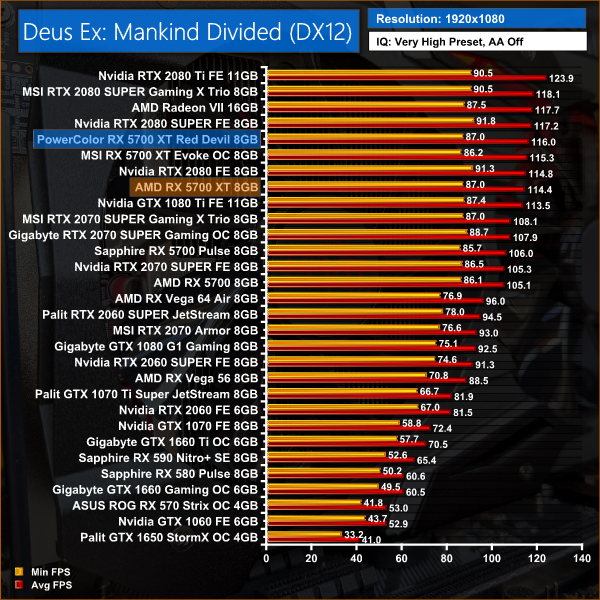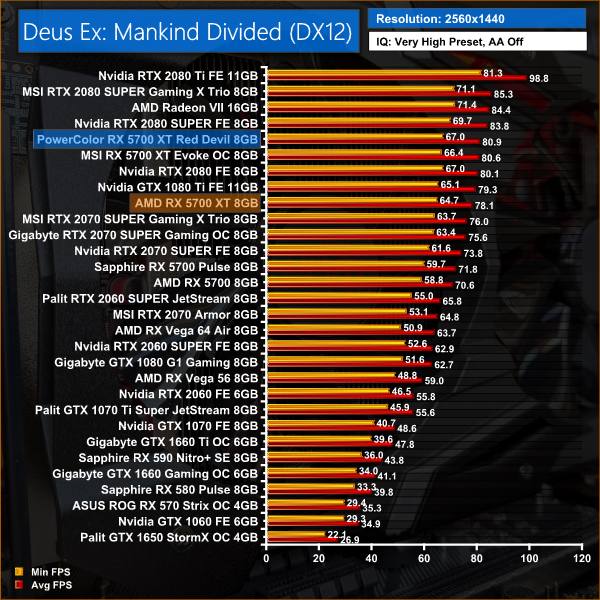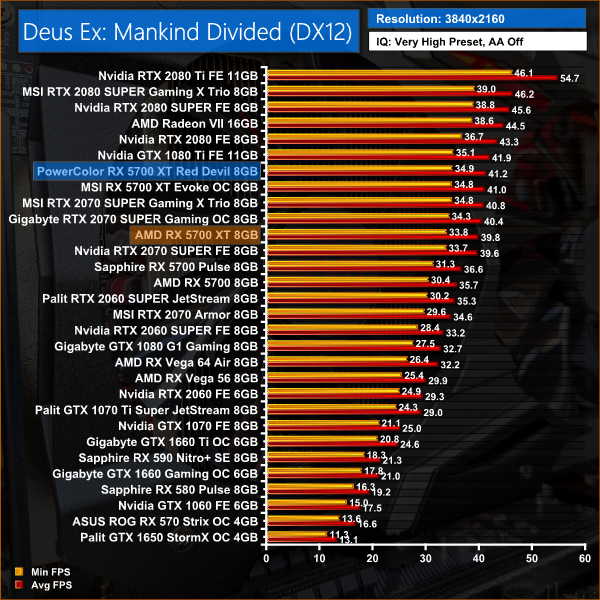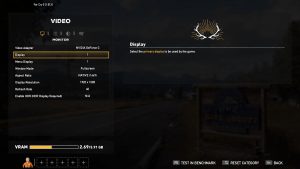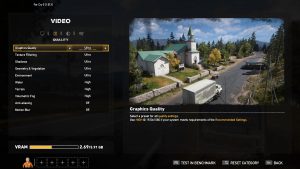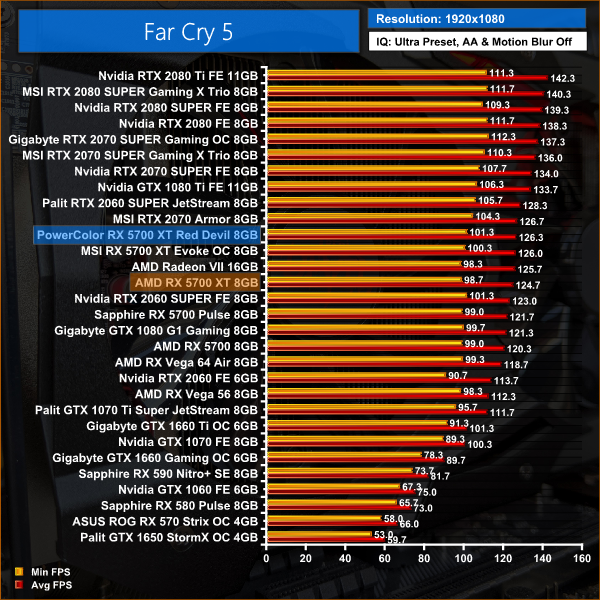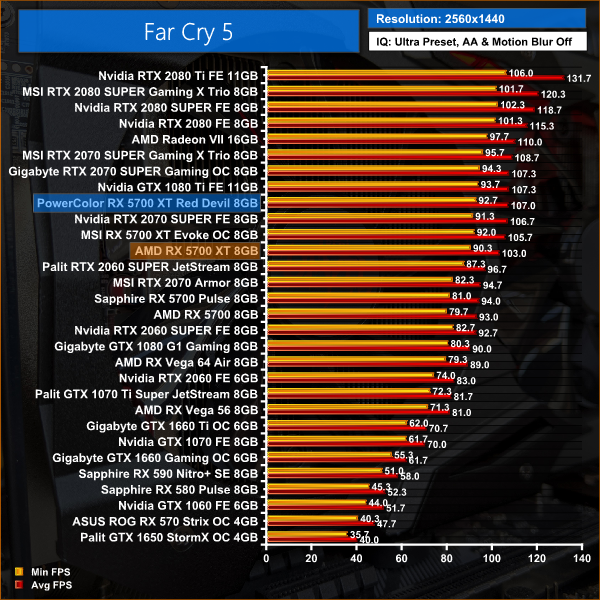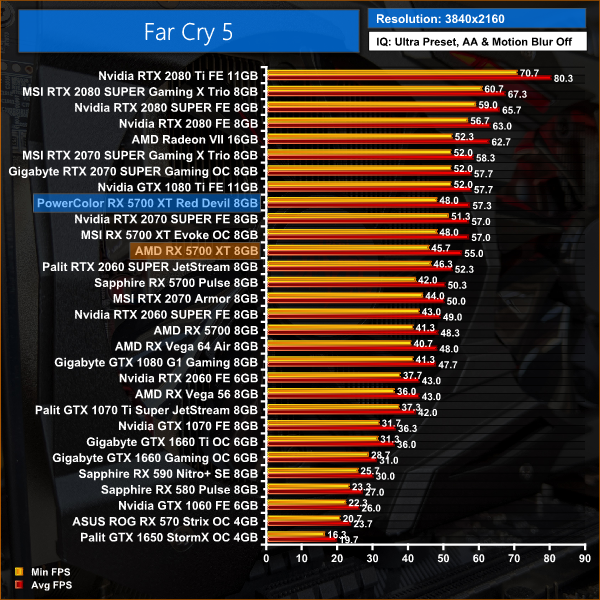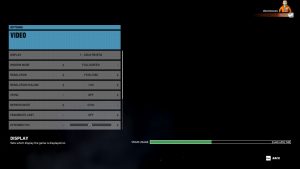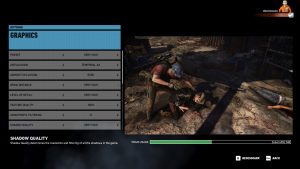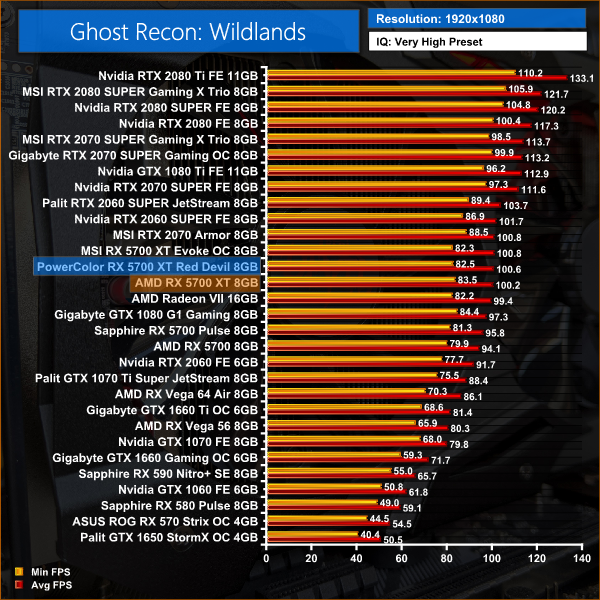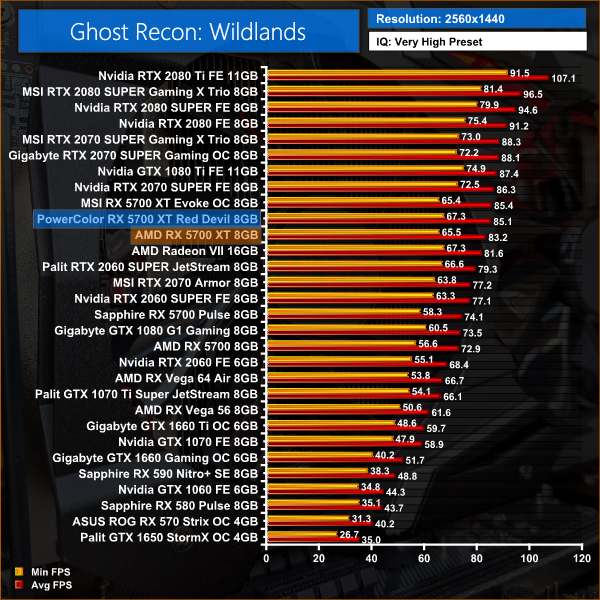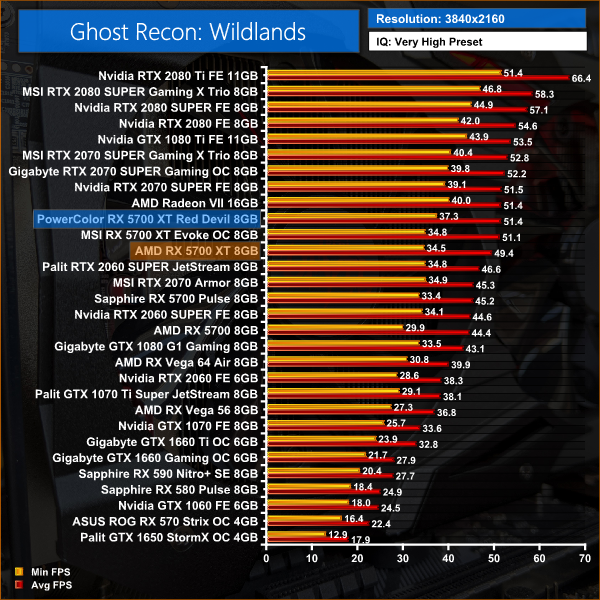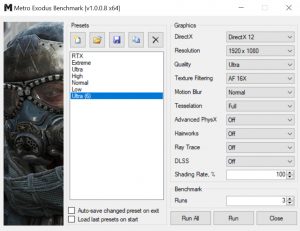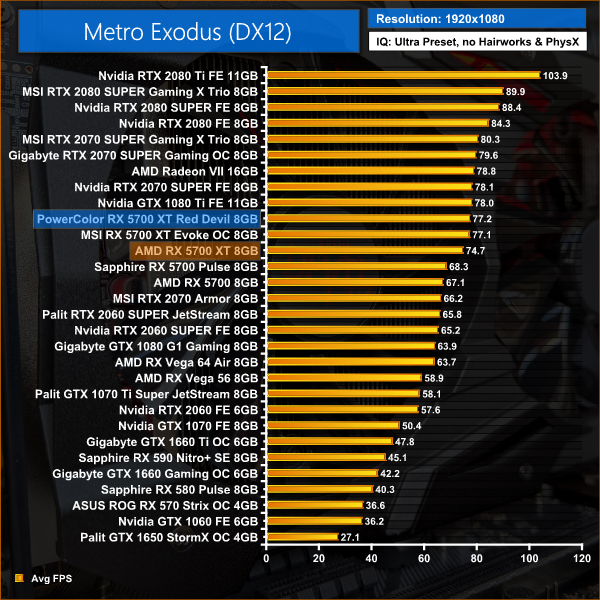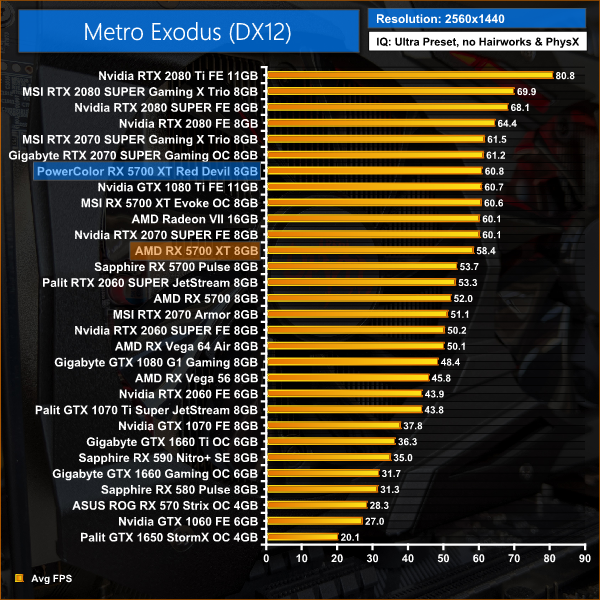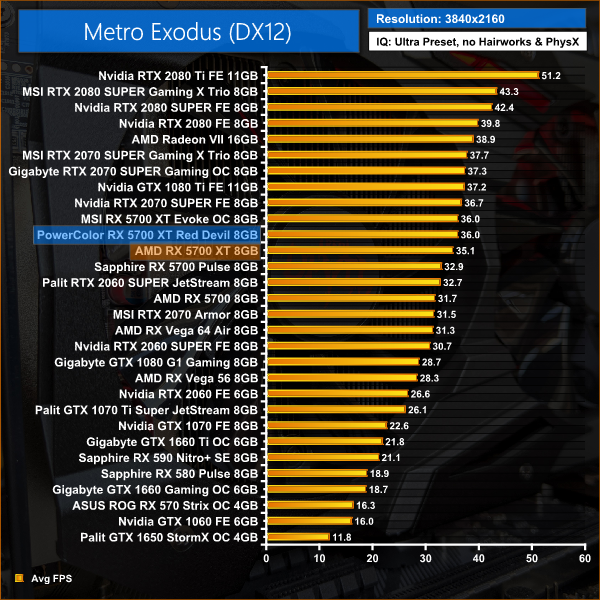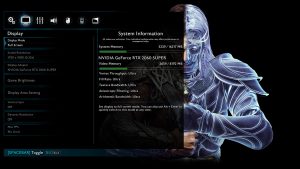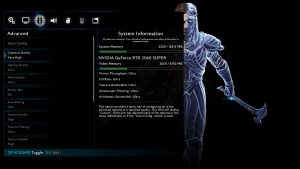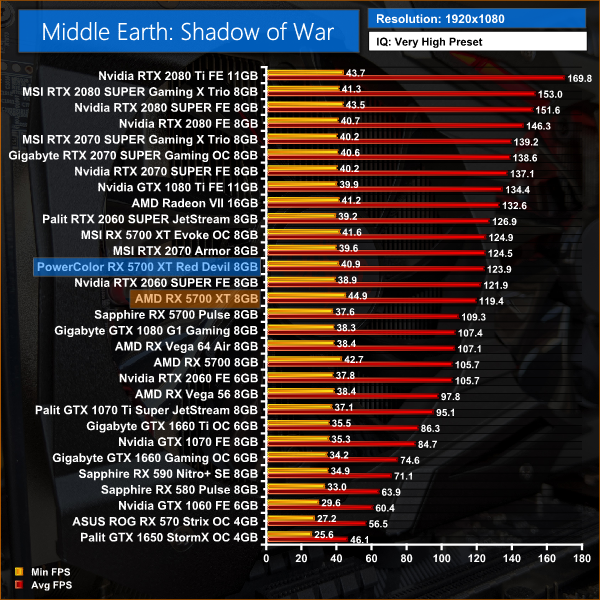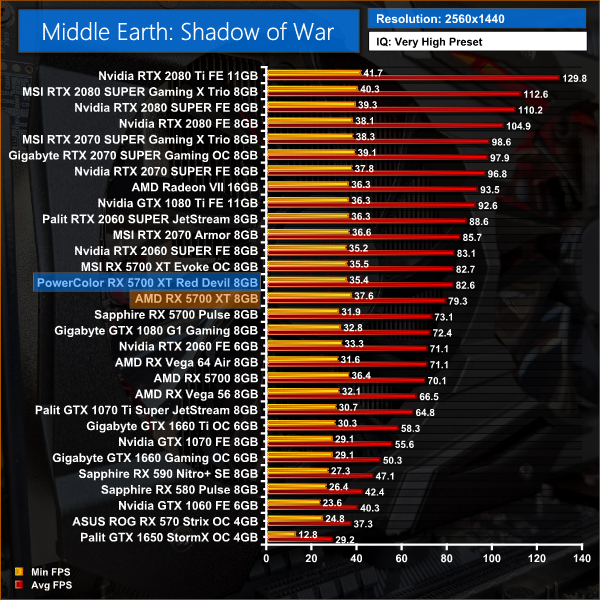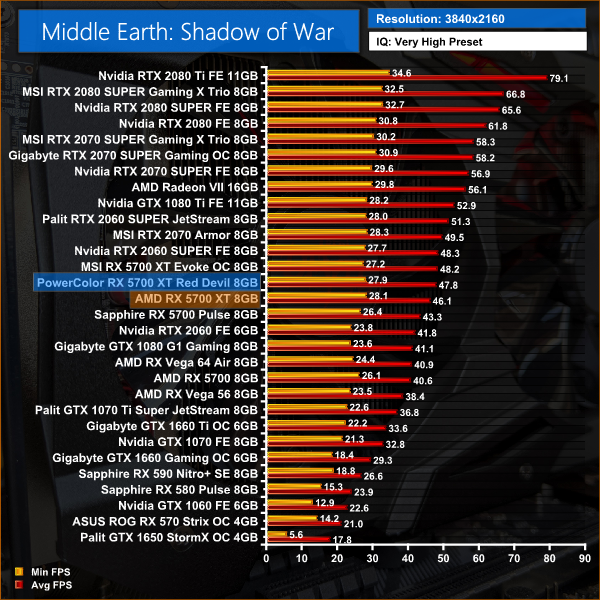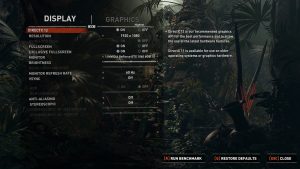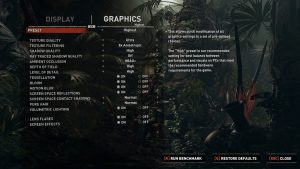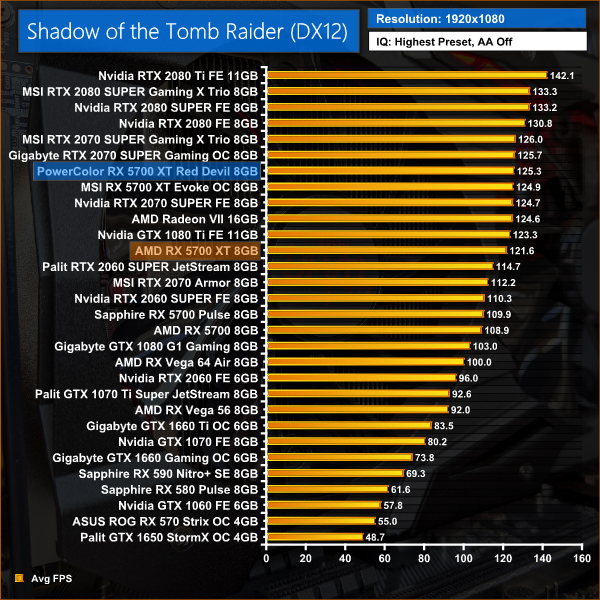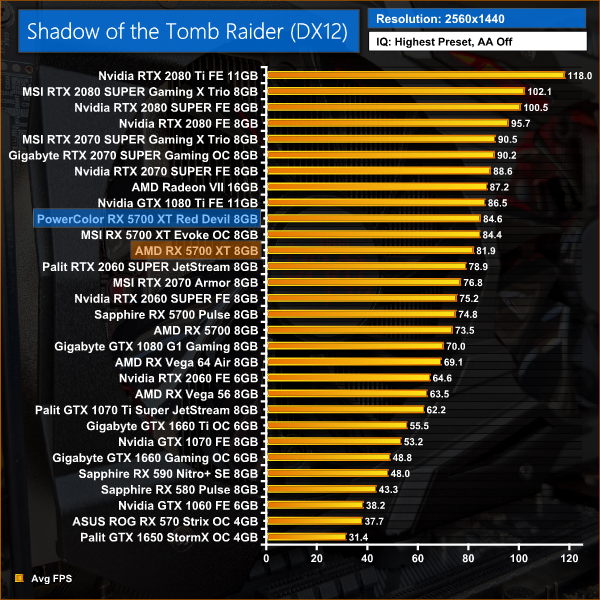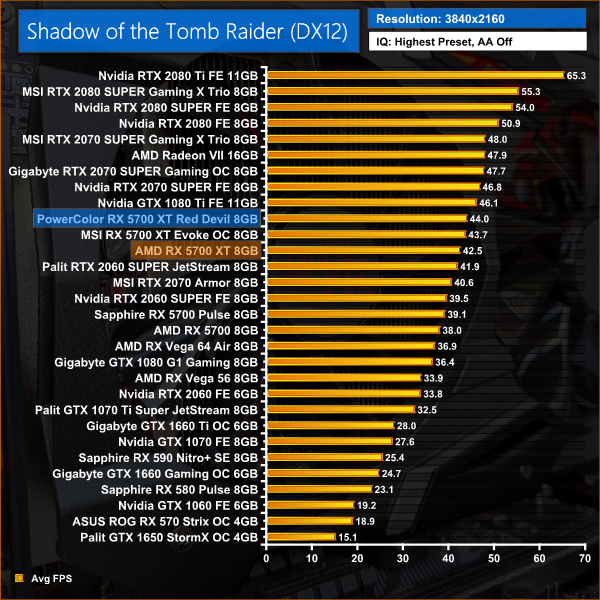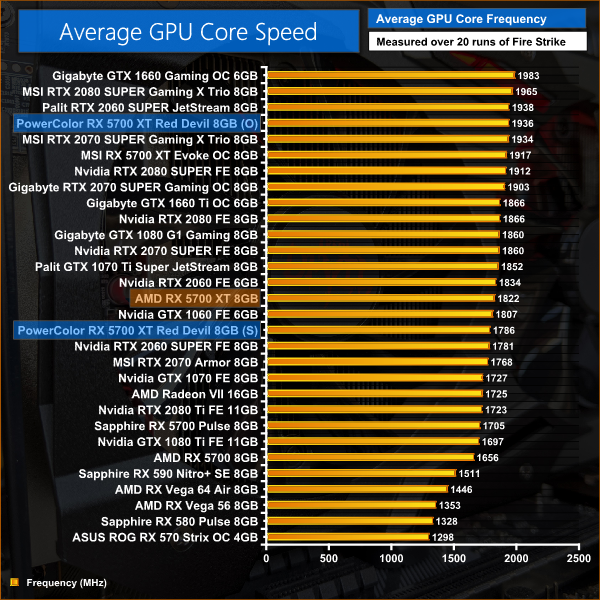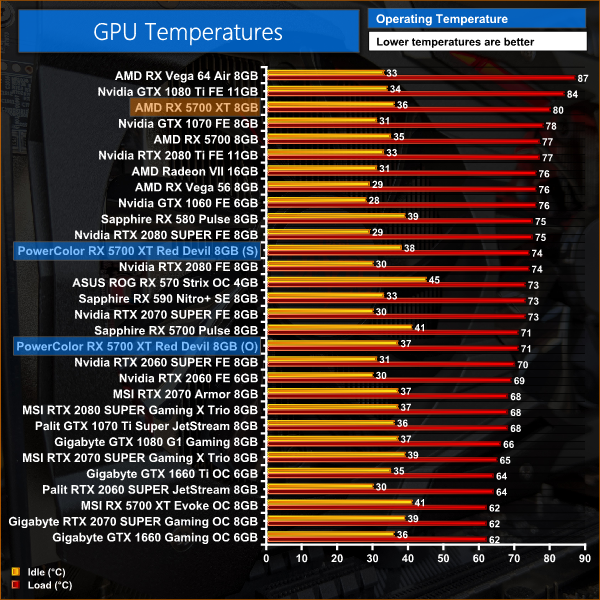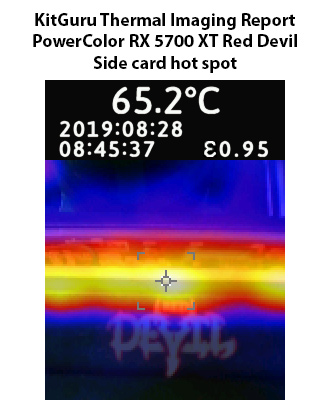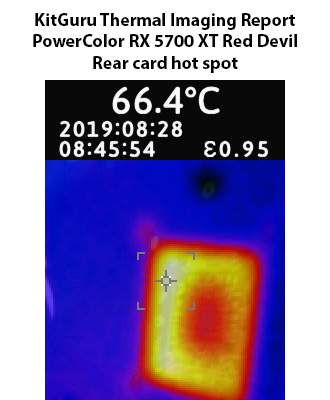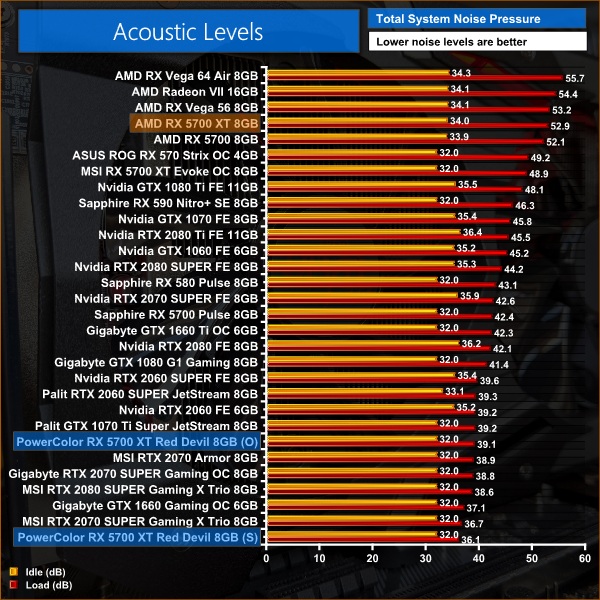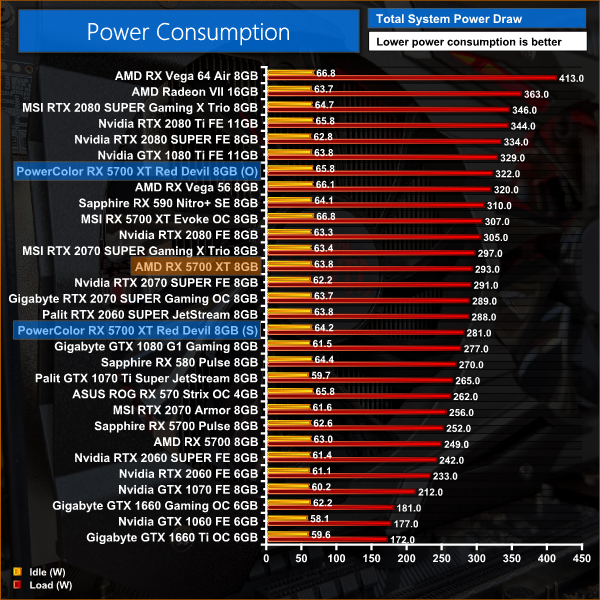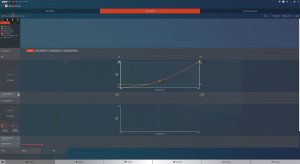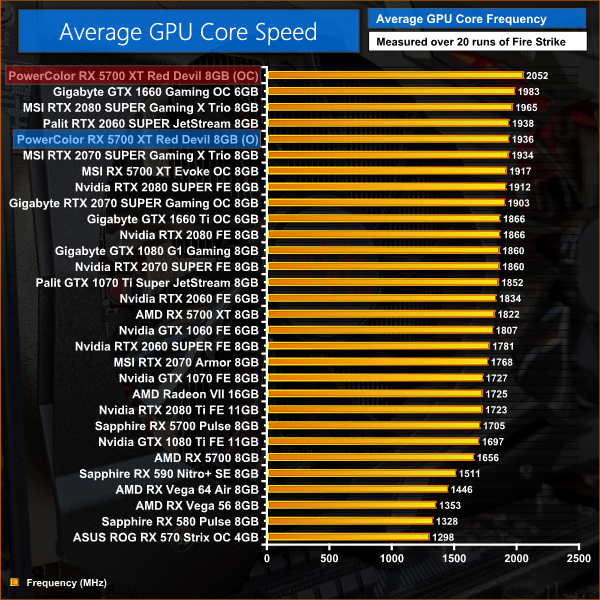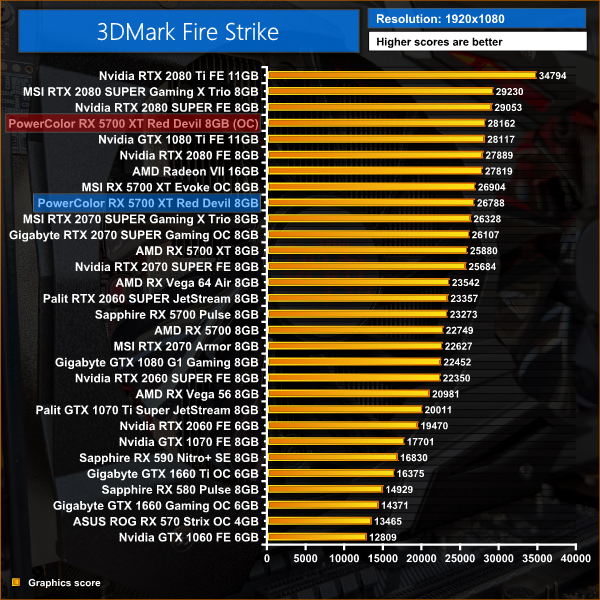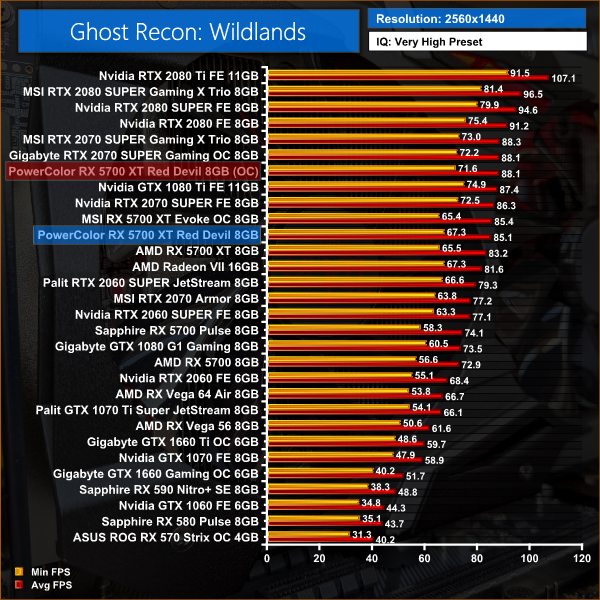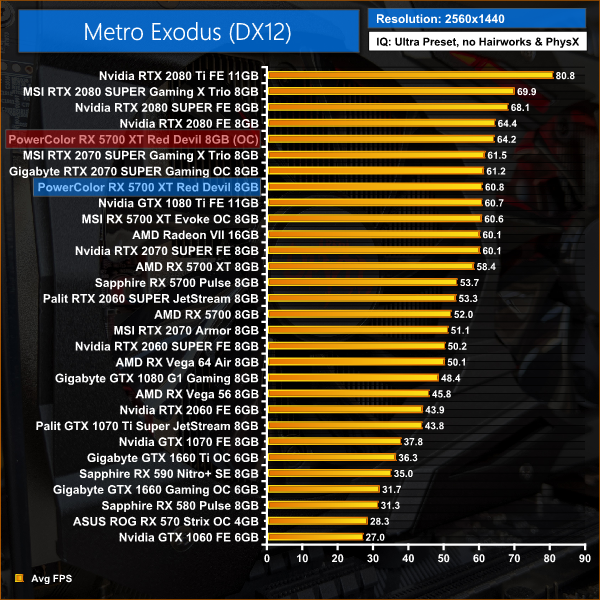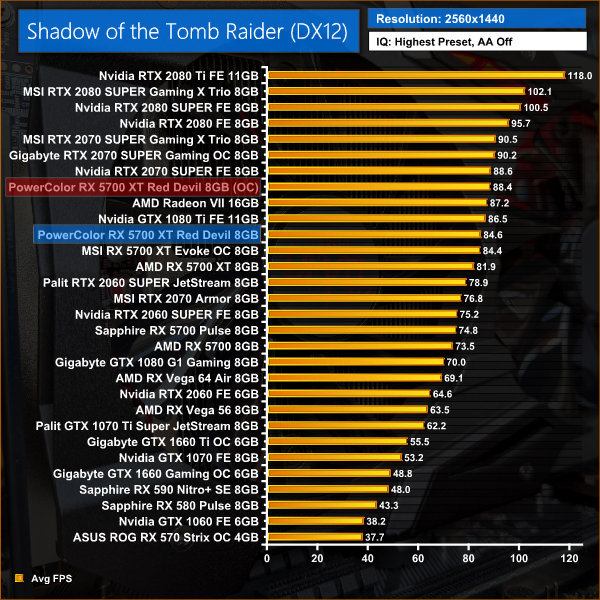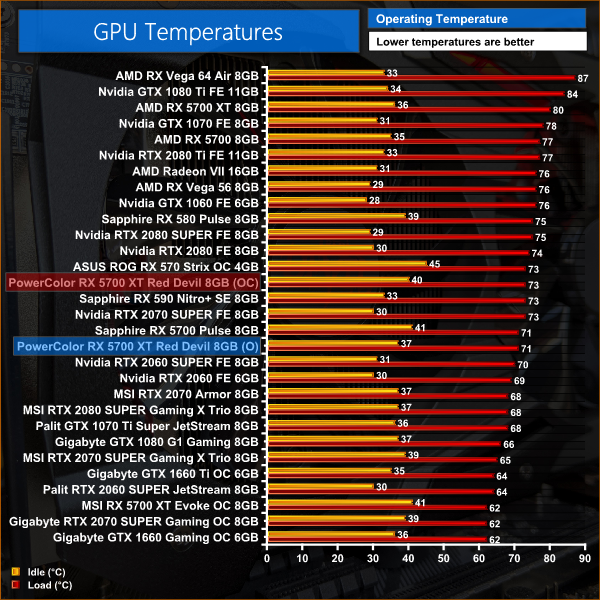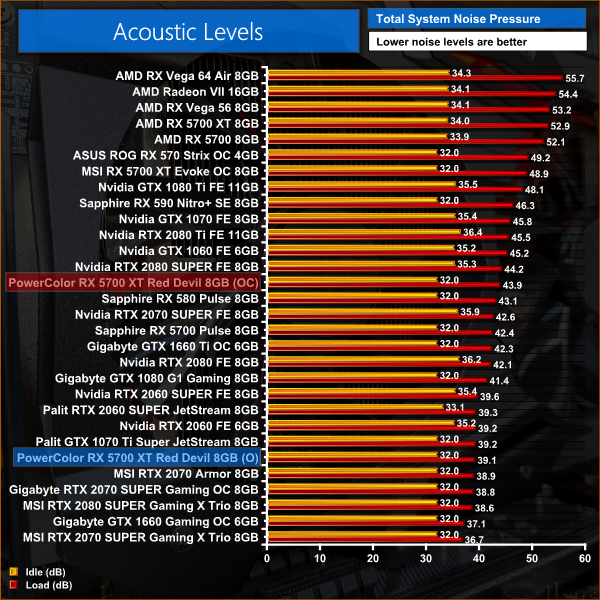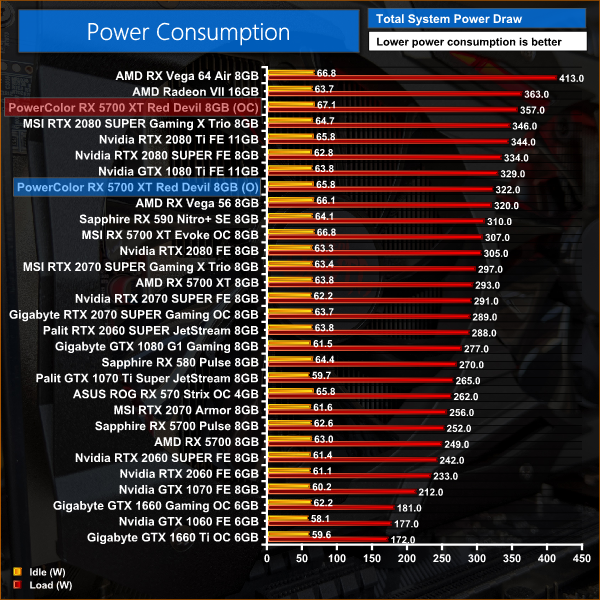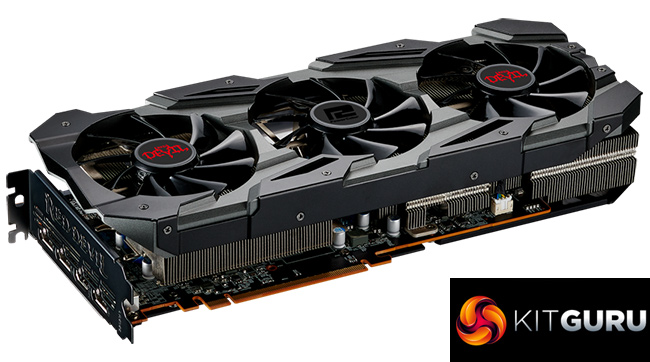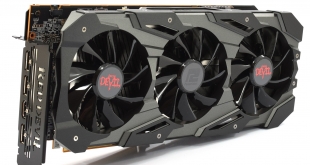
Custom Navi graphics cards are coming thick and fast now. We've already looked at solutions from Sapphire and MSI, and today we turn to PowerColor with its RX 5700 XT Red Devil. The Red Devil series has long been popular with enthusiasts for its beefy coolers and custom PCBs, and the RX 5700 XT model in for review is no different – it sports a thick, triple-fan cooler and beefed-up power delivery alongside a factory overclocked core. With an MSRP of £449, is PowerColor onto a winner?
One of the first things you'll notice about the PowerColor RX 5700 XT Red Devil – apart from its sheer size – is the new colour-neutral design. The Red Devil cards, as the name suggests, have always had prominent red accents on the shroud but here PowerColor has toned things down significantly. The 5700 XT Red Devil is also the first of the series to sport any form of RGB lighting.
Aesthetics aside, PowerColor has applied a decent factory overclock to the card, with a rated game clock of 1905MHz. Alongside that, there is dual-BIOS functionality allowing users to choose between the ‘OC' BIOS for maximum performance, or the ‘Silent' BIOS for lower noise levels. This will be a focus of our review today.
| RX 5700 | RX 5700 XT | RX Vega 56 | RX Vega 64 | Radeon VII | |
| Architecture | Navi | Navi | Vega 10 | Vega 10 | Vega 20 |
| Manufacturing Process | 7nm | 7nm | 14nm | 14nm | 7nm |
| Transistor Count | 10.3 billion | 10.3 billion | 12.5 billion | 12.5 billion | 13.2 billion |
| Die Size | 251mm² | 251mm² | 486mm² | 495mm² | 331mm² |
| Compute Units | 36 | 40 | 56 | 64 | 60 |
| Stream Processors | 2304 | 2560 | 3584 | 4096 | 3840 |
| Base GPU Clock | Up to 1465MHz | Up to 1605MHz | 1156 MHz | 1274 MHz | 1400 MHz |
| Game GPU Clock | Up to 1625MHz | Up to 1755MHz | n/a | n/a | n/a |
| Boost GPU Clock | Up to 1725MHz | Up to 1905MHz | 1471 MHz | 1546 MHz | 1750 MHz |
| Peak Engine Clock | n/a | n/a | 1590 MHz | 1630 MHz | 1800 MHz |
| Peak SP Performance | Up to 7.95 TFLOPS | Up to 9.75 TFLOPS | Up to 10.5 TFLOPS | Up to 12.7 TFLOPS | Up to 14.2 TFLOPS |
| Peak Half Precision Performance | Up to 15.9 TFLOPS | Up to 19.5 TFLOPS | Up to 21.0 TFLOPS | Up to 25.3 TFLOPS | Up to 28.1 TFLOPS |
| Peak Texture Fill-Rate | Up to 248.4 GT/s | Up to 304.8 GT/s | Up to 330.0 GT/s | Up to 395.8 GT/s | 432.24 GT/s |
| ROPs | 64 | 64 | 64 | 64 | 64 |
| Peak Pixel Fill-Rate | Up to 110.4 GP/s | Up to 121.9 GP/s | Up to 94.0 GP/s | Up to 98.9 GP/s | 115.26 GP/s |
| Memory | 8GB GDDR6 | 8GB GDDR6 | 8GB HBM | 8GB HBM | 16GB HBM2 |
| Memory Bandwidth | 448 GB/s | 448 GB/s | 410 GB/s | 483.8 GB/s | 1 TB/s |
| Memory Interface | 256-bit | 256-bit | 2048-bit | 2048-bit | 4096-bit |
| Board Power | 185W | 225W | 210W | 295W | 300W |
Diving into the core spec of the card, based on the 7nm Navi GPU, of course this 5700 XT has 40 Compute Units and 2560 Stream Processors, with 8GB of 14Gbps GDDR6 memory. We already mentioned the 1905MHz rated game clock, which is an increase of 150MHz over the reference card. Do bear in mind, however, that game clock is only the ‘expected' GPU clock when gaming, and frequency is very dynamic with the new Navi cards. We will look at actual clock speed under load later in this review.
Another point to note is in regards to total board power. By default the card ships with the OC BIOS enabled, which has a 220W power target (interestingly 5W less than reference). By moving to the Silent BIOS, however, the card engages an 180W power target. PowerColor hasn't disclosed clock speeds for the Red Devil using the Silent BIOS, but it's a certainty that the card will run slower with 40W less power available to it – this is also something we will examine later in the review.
I received the PowerColor RX 5700 XT Red Devil in the form of the limited edition bundle – this has different packaging and a few added extras to the regular retail version, but the graphics card itself is the same. The limited edition box is jet black, with just the Red Devil logo smack-bang in the middle.
Inside, the first few accessories include a quick start guide, driver disk, sticker, and a ‘Devil Club' invitation card.
My sample also came with a special graphics card holder, but we were told this is only included with press samples – so you won't get one if you buy a Red Devil.
On top of that, the limited edition bundle includes a RGB mousepad, emphasising that this is the first PowerColor graphics card with RGB lighting. If you don't want this – the limited edition bundle does cost extra – like we already said, the graphics card itself is the same if you just buy the regular version.
Moving onto the card itself, as we mentioned on the first page PowerColor has moved away from its bold red design of previous Red Devil cards, and the 5700 XT Red Devil is much more colour neutral, with a black and gunmetal grey shroud. There are still two small Red Devil stickers on the outer fans, but other than that the rest of the card is colour neutral.
Build quality is good for a card of this price. The gunmetal section of the shroud is plastic, but it feels solid and there is little flexing to the main body of the card. The black areas on the card, however, are metal plates that have been screwed into the shroud and this adds further rigidity. No, it's not as premium as the all-aluminium MSI Evoke OC, but it doesn't feel cheap either.
As for the those fans, we obviously have three and each measures 90mm across. I'm not too keen on the glossy plastic used for these as I feel it cheapens the overall look slightly, but unless you mount the card vertically you won't see them once the card is installed. There is also a fan-stop mode where the fans stop spinning once GPU temperature drops below 60C.
The Red Devil is the biggest custom Navi card we have reviewed so far. It measures 300mm x 132mm x 53mm, so it's effectively a triple-slot card. At 30cm long, too, this may cause some issues if you have a compact case.
Along the front side of the card we find the Red Devil logo (one of the RGB zones) which sits below a RGB LED strip. To the front left, just by the I/O bracket, we can also see the dual-BIOS switch. Out of the box, the switch is positioned towards the I/O bracket – in OC mode – but you can push it over to the Silent BIOS if you prefer.
PowerColor have also fitted an attractive backplate to the Red Devil. It's made of metal and PowerColor says it measures 1.5mm thick, though you can see the cut-out behind the GPU core. There's also an interesting grille/mesh section at the end, designed to increase ventilation from the back of the card. Lastly, the logo positioned just to the left of that grille section is another RGB zone.
Elsewhere, PowerColor has also adjusted the power requirements of this card – you'll need 2x 8-pin connectors to run it.
Video outputs are the same as reference, with 3x DisplayPort and 1x HDMI. PowerColor has also placed three red LEDs just above these ports, meaning you can easily find them if you're trying to connect a display cable in the dark.
Opening up the card to look at the PCB, we can see how PowerColor has tweaked the design – most notably, the Red Devil sports a 10-phase power delivery for the GPU, up from the 7-phase reference design. It's still a 2-phase solution for the memory, however.
The memory itself is from Micron, with each chip labelled ‘9KA77D9WCW'. Lastly, we can also see the 7nm Navi GPU sitting in the middle of the PCB.
As for the cooler, this is a pretty hefty unit that is comprised of two separate fin stacks. 5x 6mm heatpipes draw the heat away from a single baseplate that contacts with both the GPU and the VRAM. There is another, much thinner coldplate to cool the MOSFETs just to the right of this.
Our newest GPU test procedure has been built with the intention of benchmarking high-end graphics cards. We test at 1920×1080 (1080p), 2560×1440 (1440p), and 3840×2160 (4K UHD) resolutions.
We try to test using the DX12 API if titles offer support. This gives us an interpretation into the graphics card performance hierarchy in the present time and the near future, when DX12 becomes more prevalent. After all, graphics cards of this expense may stay in a gamer’s system for a number of product generations/years before being upgraded.
We tested the RX Vega64 and Vega56 using the ‘Turbo‘ power mode in AMD’s WattMan software. This prioritises all-out performance over power efficiency, noise output, and lower thermals.
For this PowerColor Red Devil, it supports an OC BIOS and a Silent BIOS. We did all of our games testing with the OC BIOS engaged – the default setting. For our technical testing – clock speed, temperatures, acoustics, and power – we tested both BIOS. For those charts, an ‘O' represents the OC BIOS, and ‘S' represents a result from the Silent BIOS.
Driver Notes
- All AMD graphics cards (except RX 5700/5700 XT) were benchmarked with the Adrenalin 19.6.2 driver.
- RX 5700/5700 XT reference were benchmarked with the 19.7.1 driver supplied to press ahead of launch. The Red Devil was tested with the 19.8.1 public driver.
- All Nvidia graphics cards (except 2060/2070/2080 SUPER) were benchmarked with the Nvidia 430.86 driver.
- Nvidia RTX 2060/2070 SUPER cards were benchmarked with the 431.16 driver supplied to press ahead of launch.
- Nvidia RTX 2080 SUPER cards were benchmarked with the 431.56 driver supplied to press ahead of launch.
Test System
We test using the Overclockers UK Germanium pre-built system, though it has been re-housed into an open-air test bench. You can read more about it over HERE.
| CPU |
Intel Core i7-8700K
Overclocked to 4.8GHz |
| Motherboard |
ASUS ROG Strix Z370-F Gaming
|
| Memory |
Team Group Dark Hawk RGB
16GB (2x8GB) @ 3200MHz 16-18-18-38 |
| Graphics Card |
Varies
|
| System Drive |
Samsung 960 EVO 500GB
|
| Games Drive | Crucial M4 512GB |
| Chassis | Streacom ST-BC1 Bench |
| CPU Cooler |
OCUK TechLabs 240mm AIO
|
| Power Supply |
Corsair AX1500i 80+ Titanium PSU
|
| Operating System |
Windows 10 1903
|
Comparison Graphics Cards List
- Nvidia RTX 2080 Ti Founders Edition (FE) 11GB
- Nvidia RTX 2080 SUPER Founders Edition (FE) 8GB
- MSI RTX 2080 SUPER Gaming X Trio 8GB
- Nvidia RTX 2080 Founders Edition (FE) 8GB
- Nvidia RTX 2070 SUPER Founders Edition (FE) 8GB
- Gigabyte RTX 2070 SUPER Gaming OC 8GB
- MSI RTX 2070 SUPER Gaming X Trio 8GB
- MSI RTX 2070 Armor 8GB
- Nvidia RTX 2060 SUPER Founders Edition (FE) 8GB
- Palit RTX 2060 SUPER JetStream (8GB)
- Nvidia RTX 2060 Founders Edition (FE) 6GB
- Gigabyte GTX 1660 Ti OC 6G
- Gigabyte GTX 1660 Gaming OC 6G
- Palit GTX 1650 StormX OC 4GB
- Nvidia GTX 1080 Ti Founders Edition (FE) 11GB
- Gigabyte GTX 1080 G1 Gaming 8GB
- Palit GTX 1070 Ti Super JetStream 8GB
- Nvidia GTX 1070 Founders Edition (FE) 8GB
- Nvidia GTX 1060 Founders Edition (FE) 6GB
- AMD RX 5700 XT 8GB
- MSI RX 5700 XT Evoke OC 8GB
- AMD RX 5700 8GB
- Sapphire RX 5700 Pulse 8GB
- AMD Radeon VII 16GB
- AMD RX Vega 64 Air 8GB
- AMD RX Vega 56 8GB
- Sapphire RX 590 Nitro+ SE 8GB
- Sapphire RX 580 Pulse 8GB
- ASUS RX 570 ROG Strix Gaming OC 4GB
Software and Games List
- 3DMark Fire Strike & Fire Strike Ultra (DX11 Synthetic)
- 3DMark Time Spy (DX12 Synthetic)
- 3DMark Port Royal (DXR Synthetic)
- Battlefield V (DX12)
- Deus Ex: Mankind Divided (DX12)
- Far Cry 5 (DX11)
- Tom Clancy’s Ghost Recon: Wildlands (DX11)
- Metro: Exodus (DX12)
- Middle Earth: Shadow of War (DX11)
- Shadow of the Tomb Raider (DX12)
We run each benchmark/game three times, and present averages in our graphs.3DMark Fire Strike is a showcase DirectX 11 benchmark designed for today’s high-performance gaming PCs. It is our [FutureMark’s] most ambitious and technical benchmark ever, featuring real-time graphics rendered with detail and complexity far beyond what is found in other benchmarks and games today.
Things start well for the PowerColor RX 5700 XT Red Devil as it comes in 4% faster than the reference card across our 3DMark benchmarks, putting it neck-and-neck with MSI's Evoke OC.
Battlefield V is a first-person shooter video game developed by EA DICE and published by Electronic Arts. Battlefield V is the sixteenth instalment in the Battlefield series. It was released worldwide for Microsoft Windows, PlayStation 4, and Xbox One on November 20, 2018. (Wikipedia).
We test using the Ultra preset with the DX12 API.
Things are a little closer in Battlefield V, especially at 1080p and 1440p where we see just a 2% performance uplift for the Red Devil over the reference card. At 4K this increases to 4%, or 3FPS.
Deus Ex: Mankind Divided is set in the year 2029, two years after the events of Human Revolution and the “Aug Incident”—an event in which mechanically augmented humans became uncontrollable and lethally violent. Unbeknownst to the public, the affected augmented received implanted technology designed to control them by the shadowy Illuminati, which is abused by a rogue member of the group to discredit augmentations completely. (Wikipedia).
We test using the Very High preset, with MSAA disabled. We test using the DX12 API.
Deus Ex: Mankind Divided is another interesting one, with all three of our 5700 XT cards coming within 1% of each other – though there is a noticeable CPU bottleneck at that resolution. At 1440p and 4K, we see the Red Devil improving on the reference card by 4%.
Far Cry 5 is an action-adventure first-person shooter game developed by Ubisoft Montreal and Ubisoft Toronto and published by Ubisoft for Microsoft Windows, PlayStation 4 and Xbox One. It is the eleventh entry and the fifth main title in the Far Cry series, and was released on March 27, 2018.
The game takes place in the fictional Hope County, Montana, where charismatic preacher Joseph Seed and his cult Project at Eden’s Gate holds a dictatorial rule over the area. The story follows an unnamed junior deputy sheriff, who becomes trapped in Hope County and works alongside factions of a resistance to liberate the county from Eden’s Gate. (Wikipedia).
We test using the Ultra preset, with AA and motion blur disabled.
Far Cry 5 mirrors Deus Ex perfectly – there's just 1% between the Red Devil and the reference card at 1080p, but this grows to 4% at 1440p and 4K.
Tom Clancy’s Ghost Recon Wildlands is a tactical shooter video game developed by Ubisoft Paris and published by Ubisoft. It was released worldwide on March 7, 2017, for Microsoft Windows, PlayStation 4 and Xbox One, as the tenth instalment in the Tom Clancy’s Ghost Recon franchise and is the first game in the Ghost Recon series to feature an open world environment. (Wikipedia).
We test using the Very High preset.
Things are again very close in Ghost Recon: Wildlands, with just 2.2FPS separating our three 5700 XT cards at 1440p.
Metro Exodus is a first-person shooter video game developed by 4A Games and published by Deep Silver in 2019. It is the third instalment in the Metro video game series based on Dmitry Glukhovsky's novels, following the events of Metro 2033 and Metro: Last Light. (Wikipedia)
We test using the Ultra preset, but with Hairworks and Advanced PhysX turned off. We test using the DX12 API.
Metro Exodus shows consistent gains for the Red Devil, with the card 3% faster than reference at 1080p and 4K.
Middle-earth: Shadow of War is an action role-playing video game developed by Monolith Productions and published by Warner Bros. Interactive Entertainment. It is the sequel to 2014’s Middle-earth: Shadow of Mordor, and was released worldwide for Microsoft Windows, PlayStation 4, and Xbox One on October 10, 2017. (Wikipedia).
We test using the Very High preset.
PowerColor's Red Devil is 4% faster than the reference card across every resolution tested when playing Middle Earth: Shadow of War.
Shadow of the Tomb Raider is an action-adventure video game developed by Eidos Montréal in conjunction with Crystal Dynamics and published by Square Enix. It continues the narrative from the 2013 game Tomb Raider and its sequel Rise of the Tomb Raider, and is the twelfth mainline entry in the Tomb Raider series. The game released worldwide on 14 September 2018 for Microsoft Windows, PlayStation 4 and Xbox One. (Wikipedia).
We test using the Highest preset, with AA disabled. We test using the DX12 API.
It's more of the same in Shadow of the Tomb Raider, with 3% performance uplift on average for the Red Devil versus the reference card. Its performance is essentially identical to MSI's Evoke OC.
Here we present the average clock speed for each graphics card while running the 3DMark Fire Strike Ultra stress test 20 times. We use GPU-Z to record the GPU core frequency during the Fire Strike Ultra runs. We calculate the average core frequency during the entire 20-run test to present here.
This is the first example where we tested both on-board BIOS – OC and Silent. The OC BIOS averaged 1936MHz under load, meaning it runs about 115MHz faster than reference. The Silent BIOS, however, has a lower power target of just 180W and accordingly drops clock speed below the reference card, averaging 1786MHz.
For our temperature testing, we measure the peak GPU core temperature under load, as well as the GPU temperature with the card idling on the desktop. A reading under load comes from running the 3DMark Fire Strike Ultra stress test 20 times. An idle reading comes after leaving the system on the Windows desktop for 30 minutes.
Furthering our look at the dual-BIOS functionality, with the default OC BIOS we can see a 9 degree reduction in temperatures over the reference design, a great result for PowerColor. Things don't get much worse when switching to the Silent BIOS either, with just a 3C increase to temperatures. This is due to the card downclocking when in the Silent BIOS mode – if it ran as fast as it did in OC mode, but with its less aggressive fan curve, temperatures would be much higher.
The above thermal images were taken with the card using the OC BIOS, and clearly there is nothing to worry about, with hot spots on the side and rear of the card hovering around the 65C mark.
We take our noise measurements with the sound meter positioned 1 foot from the graphics card. I measured the noise floor to be 32 dBA, thus anything above this level can be attributed to the graphics cards. The power supply is passive for the entire power output range we tested all graphics cards in, while all CPU and system fans were disabled.
A reading under load comes from running the 3DMark Fire Strike Ultra stress test 20 times. An idle reading comes after leaving the system on the Windows desktop for 30 minutes.
This is where things get very interesting for the Red Devil. Even with the OC BIOS – running 115MHz faster and 9C cooler than reference – noise levels are fantastic, barely reaching 39dB. This means the card is barely audible under load, with the fans spinning at around 1460rpm – 41% – for the majority of our stress test.
Engaging the Silent BIOS is even better. Here the fans dropped below 1000rpm (!), spinning at 950-970rpm (26-27%) for the duration of our testing. At these speeds, I have to be honest and say the card is just ridiculously quiet, to the point where the sound meter was telling me it was hearing something – but with my ear any further than two inches from the card, on an open air test bench no less, I just could not hear it.
We measure system-wide power draw from the wall while the card is sat idling at the Windows 10 desktop for 30 minutes. A reading under load comes from running the 3DMark Fire Strike Ultra stress test 20 times.
With the OC BIOS, power draw is about 30W higher than the reference card – making this the most power-hungry custom Navi card yet. The Silent BIOS does reduce this by around 40W, meaning it actually draws less power than the reference card due to its lower clock speed.
To overclock the Red Devil, we maximised the frequency/voltage curve in Wattman and set the power limit to its maximum level (+50%). Unfortunately we encountered some hard crashes with the memory slider set to its maximum level of 950MHz, but 925MHz was perfectly stable. All of our overclocking testing was done with the OC BIOS.
Average clock speed under load
This overclock pushed the card's average clock speed up by another 115MHz, beyond 2050MHz.
Games
This overclock bumped up our frame rates by another 4%, so it's certainly nothing stellar but then again you'd still take it over stock performance. Versus the reference 5700 XT, the manually overclocked Red Devil averaged 8% higher frame rates across these three titles.Here, we take a further look at the impact of our overclock, looking at the increased temperatures, acoustics and power draw.
Temperatures
Acoustics
Power consumption
Overview
The card isn't quite as impressive when manually overclocked, but things are still very good considering the power limit has been raised 50% and the card is running at 2050MHz. Temperatures only rose 3C, and while noise levels increased by just under 5dB, this is still not very loud at all. Lastly, as expected, power draw also rose to just under 360W for the whole system.
Having spent the last couple of weeks analysing custom Navi cards from the likes of Sapphire and MSI, today we have turned to the PowerColor RX 5700 XT Red Devil. There is no doubt in my mind that this is the most impressive partner card so far.
Things start off well as PowerColor has moved away from its signature red-and-black colour scheme which was a staple of the Red Devil series. Now, the card is much more colour-neutral and sports three RGB zones. Yes, there are still two small bits of red accenting for the fan stickers, but that's really clutching at straws in my opinion. Anyone who mounts this card horizontally – as is standard – will be looking at a clean black backplate instead, so it hardly matters.
Aesthetics aside, PowerColor has made a smart choice by simply sticking a large cooler on the 5700 XT GPU. Our reviews of the MSI Evoke OC and Sapphire Pulse show you don't necessarily need a huge cooler for the Navi GPUs, but boy does it help when we get to temperatures and noise levels. First, using the card with its default OC BIOS, not only is the Red Devil 115MHz faster than reference, it's also 9C cooler and over 10dB quieter. It's safe to say it's a massive improvement over AMD's blower-style cooler.
What makes this even more impressive, however, is the Silent BIOS. This does drop clock speeds to 36MHz below reference speeds, but the trade-off is the fans spin incredibly slowly – around 950rpm, or 26%. Because the clock speed drops as well, this only results in the GPU running at 74C which is still 6C cooler than reference despite being, for all intents and purpose, inaudible.
When gaming with the OC BIOS, real-world performance gains over the reference card aren't huge – but by now we know that Navi has been delivered pretty close to its limits, so we won't see huge gains from a factory overclocked partner card. In the case of the Red Devil, it runs on average 3% faster than the reference RX 5700 XT, putting it essentially on par with MSI's Evoke OC in terms of frame rates.
This cuts the gap between the 5700 XT and Nvidia's RTX 2070 SUPER to just 1% in Nvidia's favour, though the Red Devil is 4% slower than a factory overclocked model like MSI's Gaming X Trio. However, it is 13% faster than reference 2060 SUPER and 8% faster than Palit's 2060 SUPER JetStream – which retails for the same price as the Red Devil.
Speaking of pricing, there's no denying that US buyers get the better deal here, as the Red Devil has an MSRP of $439 – just $39 more than reference, and still $61 cheaper than 2070 SUPER. If you're based in America and want a new graphics card, at that price the Red Devil is an absolutely fantastic purchase and I'd pay the extra $40 premium over the reference card every day of the week.
Here in the UK, though, it is a definite shame that pricing isn't as attractive as in the US – here the card will set you back £449, or £70 more than reference MSRP. That brings pricing closer to the £475 MSRP of the 2070 SUPER, though at the time of writing there are still no cards available for that price – the cheapest I've seen is the Palit Blower X for £499.
Unfortunate currency conversion aside, it is clear PowerColor has absolutely nailed it with the RX 5700 XT Red Devil. This is a card that runs very cool and very quiet, while the dual-BIOS functionality is excellent. The bar has just been raised for custom Navi GPUs.
You can buy the RX 5700 XT Red Devil for £449.99 from Overclockers UK HERE.
Pros
- Colour-neutral design with three RGB zones.
- OC BIOS runs 115MHz faster and 9C cooler than reference.
- Silent BIOS is ridiculously quiet and lowers power draw by 40W.
- Dual-BIOS functionality lets you choose your preferred mode.
- Attractive backplate.
- $39 premium is well worth it for US buyers.
Cons
- Pricing isn't as attractive for those in the UK.
- Glossy plastic fans look a bit cheap.
KitGuru says: PowerColor has knocked it out of the park with the RX 5700 XT Red Devil. It will be fascinating to see how other flagship custom cards from the likes of Sapphire and ASUS compare in the coming weeks.
Be sure to check out our sponsors store EKWB here
 KitGuru KitGuru.net – Tech News | Hardware News | Hardware Reviews | IOS | Mobile | Gaming | Graphics Cards
KitGuru KitGuru.net – Tech News | Hardware News | Hardware Reviews | IOS | Mobile | Gaming | Graphics Cards


